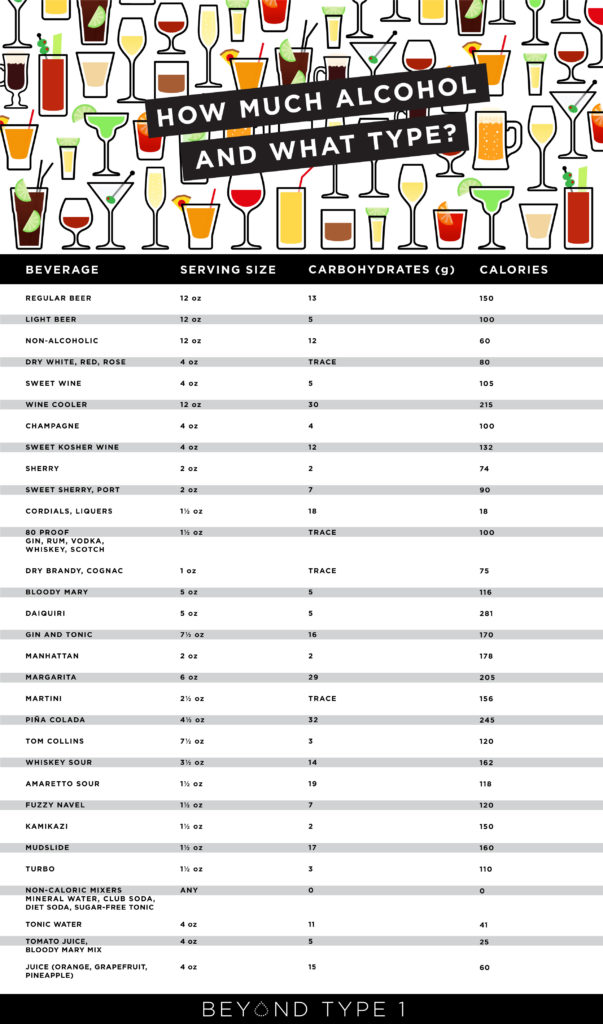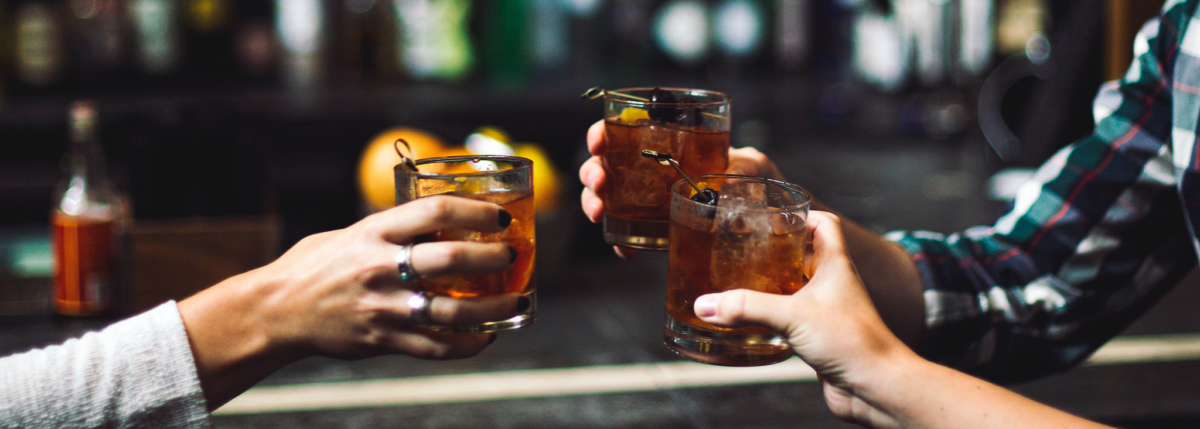How much alcohol and what type is best with diabetes?
Editor’s Note: This content has been verified by Marina Basina, MD, a clinical associate professor at Stanford University. She’s a clinical endocrinologist and researcher with a focus on diabetes management and diabetes technology. Dr. Basina is an active member of multiple medical advisory boards and community diabetes organizations, and she is on the Beyond Type 1 Science Advisory Council.
So, you are going to drink alcohol. But what type is best to drink with diabetes? And how much can you drink? Before choosing what types of alcohol you want to be drinking, make sure that you understand the risks of drinking with diabetes and how to drink safely.
How much alcohol?
If you’re going to drink, exercise moderation. According to the Centers for Disease Control and Prevention (CDC), women with diabetes should consume no more than one serving of alcohol a day. Men with diabetes should consume no more than two servings per day. One serving of alcohol typically looks like the following:
- 12 ounces of beer
- 5 ounces of wine
- 1 ½ ounces of distilled spirits
What type of alcohol?
The type of alcohol that you choose to drink can influence how your night turns out if you have diabetes. Different drinks will affect your body with diabetes wildly differently. This is because there are two competing factors. On one hand, alcohol alone inhibits the steady release of glucose from the liver, which can cause low blood sugar. Read more about why that is here.
On the other hand, the sugar and carbs in many drinks can cause high blood sugar. Because of how volatile your body’s reaction to drinking can be, make sure to be constantly checking your blood glucose levels (BGLs). Be cognizant of what is in whatever you are drinking.
Check out Beyond Type 1’s Drinking Carb Chart.
Beer
Beer is a popular drinking choice, whether it be while social drinking or just cracking open an ice cold bottle in front of the television on game night. However, one important thing to consider when drinking beer with type 1 diabetes is the carb content. A light beer contains between 3-6 grams of carbs per serving. Non-light beer contains between 10-15 grams of carbs. Then take into account the fact that many people don’t just drink one can of beer (the alcohol content of beer is 4-7%), and you can have a lot of carbs on your hand that you are going to have to account for with diabetes. This doesn’t mean that drinking beer is out of the question; in fact, alcohol’s tendency to lower BGLs might actually make these carbs helpful, but this is just something to keep in mind.
Wine
Wine is another popular choice of alcohol, kinda like beer’s classier sibling. The alcohol content of wine ranges from 12-15%, and therefore, the serving size for wine is a smaller 5 oz. Much like with beer, when drinking wine, it is important to factor in the carb content, which can vary wildly with different types of wine. Most red wines have less than 5 grams of carbs per serving. However, one 3.5 oz serving of dessert wine clocks in at 14 grams of carbs. Check the carb chart at the end of this article for more information.
Mixed drinks
Mixed drinks are notoriously hard to track, which is especially important with diabetes. This is because unless you are informed, the amount of alcohol and carbs between different mixers and alcohols can be completely different. For example, a typical serving of rum and diet coke has only 2 g of carbs, while a rum and a regular coke has 26 g of carbs. Because of this, make sure you know what is in the drink you are drinking so that you can adjust accordingly. So if you are going to completely stay away from any drink, it would be the infamous punch bowl; who knows how much alcohol or carbs could be in that vaguely tropical-colored concoction?
Hard alcohol
Finally, hard alcohol. The pro about drinking straight alcohol is that the carb count is typically very low. The con is the extremely high alcohol content. Since there is so much alcohol in liquors, it makes you more susceptible to drinking too much and feeling the negative side effects of drinking with diabetes. Furthermore, if you are drinking liquor, make sure that you are also drinking water or other liquids. You don’t want to end up dehydrated, which can mess up your blood sugar levels.
Learn more about drinking with diabetes.

Information from chart from UCSF
Return to Beyond Type 1’s Alcohol and Diabetes Guide.





